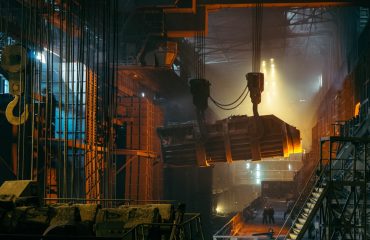Choosing the right building material is crucial for any construction project. Two titans consistently dominate the landscape: concrete and steel. Both offer unique properties and advantages, making the decision a complex one depending on factors like budget, project requirements, and environmental considerations. This comprehensive guide will delve into the key differences between concrete and steel, helping you make an informed choice.
Strength and Durability: A Tale of Two Titans
Concrete, a composite material made of cement, aggregates, and water, boasts exceptional compressive strength. This means it excels at resisting crushing forces. High-strength concrete can achieve compressive strengths exceeding 10,000 psi (pounds per square inch). However, its tensile strength (resistance to pulling forces) is significantly lower. This weakness is often addressed by reinforcing concrete with steel rebar, creating reinforced concrete, which combines the best of both worlds.
Steel, on the other hand, exhibits high tensile and compressive strength, making it incredibly versatile. Its high yield strength allows it to withstand significant loads before deformation. Steel structures can be designed to span vast distances, a feat difficult to achieve with concrete alone. However, steel is susceptible to corrosion, requiring protective measures like painting or galvanization.
Cost Comparison: Balancing Budget and Performance
The cost of concrete and steel can vary significantly based on location, availability, and project specifics. Generally, concrete is often perceived as a more economical option for large-scale projects like foundations and walls, particularly in regions with readily available aggregates. The cost of concrete is largely influenced by the price of cement and transportation costs of aggregates.
Steel, while initially more expensive per unit volume, can sometimes lead to overall cost savings in specific applications. Its high strength-to-weight ratio allows for the use of less material to achieve the same structural capacity. This can be particularly beneficial in high-rise buildings and long-span structures where minimizing weight is crucial.
Sustainability and Environmental Impact: A Green Building Perspective
Both concrete and steel have environmental footprints. Concrete production is a significant contributor to carbon emissions due to the energy-intensive process of cement manufacturing. However, advancements in concrete technology, such as the use of supplementary cementitious materials (SCMs) like fly ash and slag, are helping reduce this impact.
Steel production also has a considerable carbon footprint, primarily from the energy required for iron ore smelting. Recycling steel is highly effective in reducing its environmental impact, making it a more sustainable option compared to virgin steel production. Furthermore, the durability and longevity of both materials contribute to their overall environmental performance, reducing the need for frequent replacements.
Applications and Suitability: Choosing the Right Material for the Job
Concrete finds its primary applications in foundations, walls, slabs, and other structural elements requiring high compressive strength. It is ideal for large-scale projects like dams, bridges, and high-rise buildings (often in conjunction with steel reinforcement). Its versatility also extends to precast concrete elements, allowing for efficient construction of various components off-site.
Steel is commonly used in high-rise buildings, bridges, industrial structures, and frameworks where high tensile strength and long spans are required. Its ability to be easily shaped and fabricated makes it suitable for complex designs. Steel is also frequently used in conjunction with concrete as reinforcement, enhancing the overall structural performance.
Maintenance and Lifespan: Long-Term Considerations
Concrete structures, when properly designed and constructed, can last for decades, even centuries. Regular maintenance, such as crack repair and surface protection, can extend their lifespan considerably. However, concrete can be susceptible to freeze-thaw damage in cold climates and alkali-aggregate reaction in specific environments.
Steel, while highly durable, requires regular maintenance to prevent corrosion. Protective coatings, such as paint or galvanization, are crucial for extending its lifespan. While steel can last for many decades, neglecting maintenance can lead to significant deterioration and necessitate costly repairs or replacements.
In conclusion, the choice between concrete and steel depends heavily on the specific project requirements. Both materials offer unique advantages and disadvantages, and a thorough understanding of their properties is vital for making an informed decision. Often, the most efficient and sustainable solution involves a combination of both materials, leveraging their respective strengths to create robust and long-lasting structures.
SEO Tags: concrete, steel, construction materials, building materials, structural engineering




